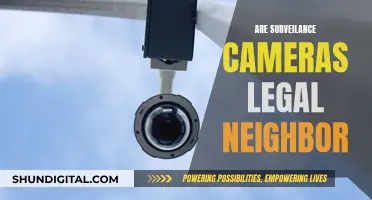
A periscope camera lens is a lens assembly that uses prisms, mirrors, or a combination of both to refract, reflect, and redirect light before it reaches the camera sensor. Periscope lenses are used in smartphones to allow for larger zoom ratios without increasing the thickness of the device. The periscope lens redirects light through the lenses with a 90-degree angle to the optical axis, allowing for optical magnification of the image. This results in higher zoom capabilities, improved macro photography, and more detailed images of distant objects.
| Characteristics | Values |
|---|---|
| Definition | A periscope camera lens is a lens assembly that uses prisms, mirrors, or a combination of both to refract, reflect, and redirect light before it reaches the camera sensor. |
| Purpose | To magnify the image more than what would be possible in a regular lens or telephoto lens assembly. |
| Image Sensor Placement | The image sensor is placed perpendicular to the back of the phone. |
| Alternative Name | Folded lens |
| Functionality | Uses the principle of folded optics, which refers to setups that send light on a trajectory longer than the size of the physical system by bouncing the light around. |
| Zoom | Provides optical zoom ranging from 3x to 10x and enables digital zoom for up to 120x on certain smartphones. |
| Light Refraction | Achieved through a prism lens or a mirror, which refracts or reflects light and redirects it inside the assembly. |
| Lens Opening | Usually rectangular, in contrast to the circular opening of regular camera lenses, to accommodate the prism's function. |
| Image Magnification | Achieved through a series of concave and convex lenses that magnify the light passing through. |
| Examples | Samsung Galaxy S23 Ultra, Apple iPhone 15 Pro Max, Google Pixel 8 Pro, OnePlus Open |
What You'll Learn

What is a periscope camera lens?
A periscope camera lens is a type of camera lens that uses a combination of prisms and mirrors to refract, reflect, and redirect light before it reaches the camera sensor. This allows for greater magnification than a regular lens or telephoto lens assembly. The term "periscope" refers to the fact that the image sensor is placed perpendicular to the back of the phone, rather than parallel as in most other lenses. This type of lens assembly is also known as a folded lens due to the folded optics principles behind its functioning.
Periscope camera lenses are commonly used in smartphones to provide optical zoom ranging from 3x to 10x, with some models offering even greater magnification. They are particularly useful for improving macro photography and allowing users to capture sharp, high-quality images of distant objects. By using a periscope lens, smartphone manufacturers can achieve greater zoom capabilities without increasing the thickness of the device.
The first mobile phone to feature a periscope lens was the Sharp 902, released in 2004, which offered 2x optical zoom. Since then, periscope lenses have become increasingly common in high-end smartphones, with companies such as Samsung, Huawei, Apple, and Google incorporating them into their devices.
Periscope camera lenses offer several advantages, including improved image quality at higher zoom levels and the ability to capture macro shots without needing to get too close to the subject. However, they also have some drawbacks, such as increased cost, larger size, and limited versatility due to their fixed focal length.
Mastering Camera Raw Color Correction Techniques
You may want to see also

How does a periscope camera lens work?
A periscope camera lens, sometimes called a folded lens, is a mechanical assembly of lens elements that uses a prism or mirror to redirect light through the lenses with a 90-degree angle to the optical axis. This allows for a longer focal length than the optical device's physical length, resulting in larger optical zooms from smaller lenses.
In a periscope camera lens assembly, light enters through a rectangular opening and is refracted at a right angle by a prism or mirror. It then passes through a series of concave and convex lenses that magnify the light before reaching the image sensor. The image sensor sits perpendicular to the body of the phone, receiving the magnified image. This arrangement allows for optical magnification of the image beyond what is possible with a conventional wide-angle or telephoto lens assembly.
Periscope camera lenses are commonly used in smartphones to provide optical zoom ranging from 3x to 10x, with some models offering even higher levels of magnification. They enable smartphones to achieve greater zoom capabilities without the need for large protruding lenses, improving image quality while zooming.
The first mainstream periscope camera lens in a smartphone was introduced by Sharp in 2004 with the Sharp 902 flip phone, which offered 2x optical zoom. Since then, periscope camera technology has evolved and become increasingly popular in premium smartphones. Today, periscope camera lenses are featured in devices such as the Samsung Galaxy S23 Ultra, Apple iPhone 15 Pro Max, and Google Pixel 8 Pro.
Street Camera Shopping: Tax Included?
You may want to see also

What are the benefits of a periscope camera lens?
The benefits of a periscope camera lens are:
- It allows for greater optical zoom without increasing the thickness of the device. This is because the periscope lens uses a combination of prisms and mirrors to refract, reflect, and redirect light before it reaches the camera sensor, allowing for optical magnification of the image.
- It enables users to capture distant objects or scenery with quality and clarity similar to that of a point-and-shoot camera, without the need for a moving lens.
- It provides improved image quality, particularly at higher zoom levels, by reducing the amount of digital zoom required.
- It can facilitate macro photography, allowing users to capture close-up shots of small objects without needing to get too near to the subject.
- It opens up space inside the device by providing optical zoom without the need for a protruding lens assembly.
- It allows for longer focal lengths, making it ideal for capturing distant subjects.
Lithium Batteries: Powering Your Camera, What You Need to Know
You may want to see also

What are some drawbacks of a periscope camera lens?
Periscope camera lenses are a recent innovation in smartphone camera technology, allowing for greater zoom capabilities compared to standard smartphone camera lenses. However, there are several drawbacks to this technology:
Limited Versatility
Periscope camera lenses have a specific range of zoom that they can function optimally within. They are ineffective for close-up subjects, requiring the use of a standard camera lens or telephoto lens to handle zoom duties for subjects within the periscope lens' range. For subjects beyond the periscope zoom range, digital zoom is necessary, which can result in a loss of image quality.
Narrow Aperture
The periscope design, with its increased focal length, leads to a narrower aperture. This reduces the amount of light that reaches the sensor, which can result in dimly lit or artificially overexposed images compared to a primary camera with a larger aperture.
Cost and Space Constraints
Periscope camera lens assemblies are large and expensive, taking up a significant amount of space within a smartphone's limited physical dimensions. This can impact the inclusion of other hardware features and contribute to increased costs for both manufacturers and consumers.
Image Stabilization
Zoom photography is sensitive to motion, and the periscope design can amplify even subtle jolts or movements. While Optical Image Stabilization (OIS) can be employed to compensate, it adds to the overall cost and complexity of the system.
Limited Sensor Size
The orientation of the periscope camera sensor, perpendicular to the phone's body, restricts the available space for the sensor. This limits the pixel density and light-gathering capacity, impacting low-light performance.
Understanding Camera Raw Cache Files in Windows
You may want to see also

How does a periscope camera lens compare to a telephoto lens?
A periscope lens uses a prism or mirror to redirect light through the lenses at a 90° angle to the optical axis. This allows for a more compact lens system, as the lenses are turned by 90° and aligned with the smartphone's length or width rather than its depth. This arrangement helps to accommodate multiple lenses without significantly increasing the device's thickness, enabling higher optical zoom ratios. The first mobile phone to feature a periscope lens camera was the Sharp 902, released in 2004, with a 2x variable zoom. Subsequent smartphones, such as the Huawei P30 Pro and P40 Pro+, have offered 5x and 10x zoom periscope lenses, respectively.
On the other hand, telephoto lenses typically offer lower optical zoom ratios, usually in the range of 2x to 3x. They achieve this magnification without the need for a prism or mirror to redirect light, resulting in a more traditional circular camera opening. Telephoto lenses have a longer focal length compared to periscope lenses due to the higher number of lenses used in the periscope setup. Additionally, telephoto lenses may have the advantage of a larger aperture, allowing more light to reach the sensor and potentially improving low-light performance.
One key advantage of periscope lenses is their ability to provide higher optical zoom ratios without significantly increasing the thickness of the device. This makes them ideal for smartphones and other compact camera systems. Periscope lenses also offer improved image stabilisation due to the inclusion of optical image stabilisation (OIS) in the prism, which helps compensate for jolts and movements during zoomed-in photography.
However, periscope lenses have some disadvantages. The fixed focal length of the periscope setup limits the zoom capabilities, and the narrow aperture can result in dimly lit or overexposed images compared to telephoto lenses. Additionally, the complex optics of periscope lenses can introduce more noise and visual artifacts in the final image.
Recenter Your Modo Render Camera: Quick Guide
You may want to see also







